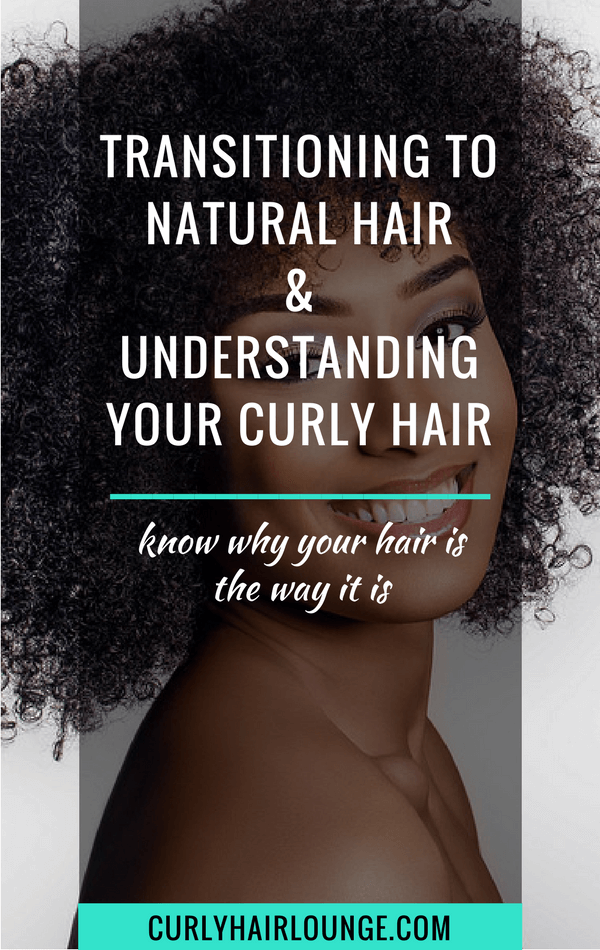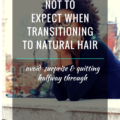So you made up your mind or are considering your options on whether to go natural or not. You want to discover more about what it takes to transition from relaxed to natural hair. It’s understandable, I did that too. But first things first, before you educate yourself about shampoos, conditioners or hairstyles it is necessary to understand curly hair and how it differs from others. I hope this information will help you understand the needs of curly hair and guide you on a healthy hair journey.
 Many believe or view hair as a living structure in the body, however, it’s actually not. The minute your hair pierces through of your scalp it is not a living structure anymore. It’s a sad picture and maybe even a surprising one I know, but how else would it endure what we put it through. If it were alive we’d be able to feel EVERYTHING we do to it! How would we endure the high temperatures, the chemicals, the pulling, the stretching… It would be horrific!
Many believe or view hair as a living structure in the body, however, it’s actually not. The minute your hair pierces through of your scalp it is not a living structure anymore. It’s a sad picture and maybe even a surprising one I know, but how else would it endure what we put it through. If it were alive we’d be able to feel EVERYTHING we do to it! How would we endure the high temperatures, the chemicals, the pulling, the stretching… It would be horrific!
The image on the left side gives you a representation of a strand of human hair. The central part is the medulla which can be hollow or filled with cells. The middle part is the cortex and it’s where keratin can be found – a strong structural protein that is the major constituent of hair – and the cuticle is the outer layer which plays an important part in maintaining the integrity of our hair. It is formed by several layers of scales that protect the cortex much like a private army. 😉
These different structure of the hair are the same to everyone’s hair, regardless of race. However, when caring for our hair, there are characteristics between Caucasian, African and Asian hair that influence how our hair is and behaves, which are important to know so we choose the right products and haircare practices and techniques.
HAIR GROWTH & DENSITY
When it comes to hair density, studies show that people across every race normally have 100,000 follicles of hair in the scalp, but blondes have 10% more density and reds 10% less. However, when it comes to hair growth the story is different.
Know how we, naturals, always want to make our hair grow faster than it does? Well, apparently African hair has the slowest growth rate when compared to Caucasian and Asian hair, with the later having the fastest hair growth and being the most predominant hair type (no wonder I secretly longed for Asian-like hair when I was a teenager 😉 ).
However, I don’t want you to believe the hair myth going around saying that natural hair doesn’t grow. I want you to ‘Shhhsh’ those voices in your head, please. I’m telling you it is possible to grow your hair past BSL (bra strap length). Despite some studies pointing towards a slower growth rate, others point to the fact that differences in findings aren’t very expressive and just so you know, studies say slower not, ‘no growth’. So don’t hit the panic button.
Contrary to what many people believe or know, our hair doesn’t grow all at the same time. Hair growth undergoes a repetitive cycle that has 3 stages: Anagen (active growth), Catagen (end of active growth) and Telogen (resting stage). The reason we believe our hair grows all at the same time it’s because 90% of it is in the active growth stage for 2-3 years, so we don’t really notice. Only 10-14% is in the resting stage (telogen) for about 3 months, which is when shedding occurs. However, the length of each stage varies, but it takes about 3 years for the cycle to be completed.
So if your active growth stage is only 2-years while somebody else’s is 3 or 4-years when comparing both, over a period of 5 years, you’d have different hair lengths. To increase the rate of your hair growth, which is what many want to do, you would need to prolong the Anagen phase. However, with proper haircare practices, hair growth can be retained and you don’t need to go to all the trouble.
Another reason why people may believe African/African descent hair grows slower is because of its shape.
HAIR SHAPE
Hair can differ in shape, diameter and texture. Keep in mind that the hair follicle is like a tube that moulds the shape of our hair as it grows. Race influences our hair being thin or thick and being straight or curly. A cross-sectional view of the hair’s diameter shows Caucasian and African hair being narrower than Asian hair. This view of the hair also shows that the hair can be circular, oval and even flattened which influences curl pattern.
It has been proven that Asian hair is more circular and straight, Caucasian hair is oval and somewhat curly and African hair is oval, flattened and twisted making it more prone to damage and breakage. So, the issue of hair growth may not only be linked to its growth rate but also with length retention. Curlier hair when styled, whether through combing, styling or daily manipulation, is more prone to breakage and knots. Additionally, health, genetics, age, hormonal changes and environment have an effect on hair growth.

Another aspect that is influenced by hair shape is how dry or oily curly hair can be. The cuticle of the hair is covered with a layer of sebum (hair’s natural oil) secreted by the sebaceous gland which protects our hair from dryness and breakage. Sebum travels easier in straight hair. This oil has more difficulties travelling down the hair shaft the tighter the curl is. Making African hair more predisposed dryness which leads do to breakage.
DAMAGE TO HAIR STRUCTURE
Despite all these differences, damage to the hair happens to all hair types. The cuticle layer of the hair with its scales protects the hair from environmental (the sun, the wind and cold dry winter), mechanical (detangling, hairstyling, manipulation, etc.) and chemical factors (dyeing, bleaching, relaxing). When this layer is damaged, our hair is more likely to break. Individuals with tight curly hair frequently straighten their hair structure temporally through the use of heat or permanently by using relaxers thus, weakening the cuticle.
Once the outer layer of the hair is damaged, this damage can develop and reach the cortex layer of the hair which is mainly composed of keratin. Keratin and other keratin-associated proteins help maintain the shape and texture of the hair which gives hair its elasticity and strength. This structure of the hair is damage broken when our hair undergoes a styling process, such as hair permanents, straightening or colouring and the hair is then even more likely to split or break.
FINAL THOUGHTS
In the end, understanding different hair characteristics among different race groups will help find the best way to care for each hair type. Curly hair requires extra moisture and low manipulation to prevent dryness and breakage and to keep length retention. If the hair is chemically treated it will require regular conditioning treatments. Cleansing and conditioning are important components of a good hair routine along with regular trimmings.
Ultimately, whether our hair is short or long, straight, wavy or curly, natural, permed or relaxed knowledge will definitely lead us to our final goal – healthy hair.
Are you on a natural hair journey? What new thing did you learn about naturally curly hair?
Image Credit: Hawksiring_Look good, feel good on Flickr (license)
Content updated: March/2019







2 thoughts on “Transitioning To Natural Hair And Understanding Your Curly Hair”
This is great informative especially as a fellow natural sista. I’ve been natural most of my life and only occasionally straightened my hair. The less I fuss with my hair the more it seems to grow. It’s past my bra strap right now 😉
Thanks! You’re right the less fuss the more it grows, but always moisturise! Stop by anytime.